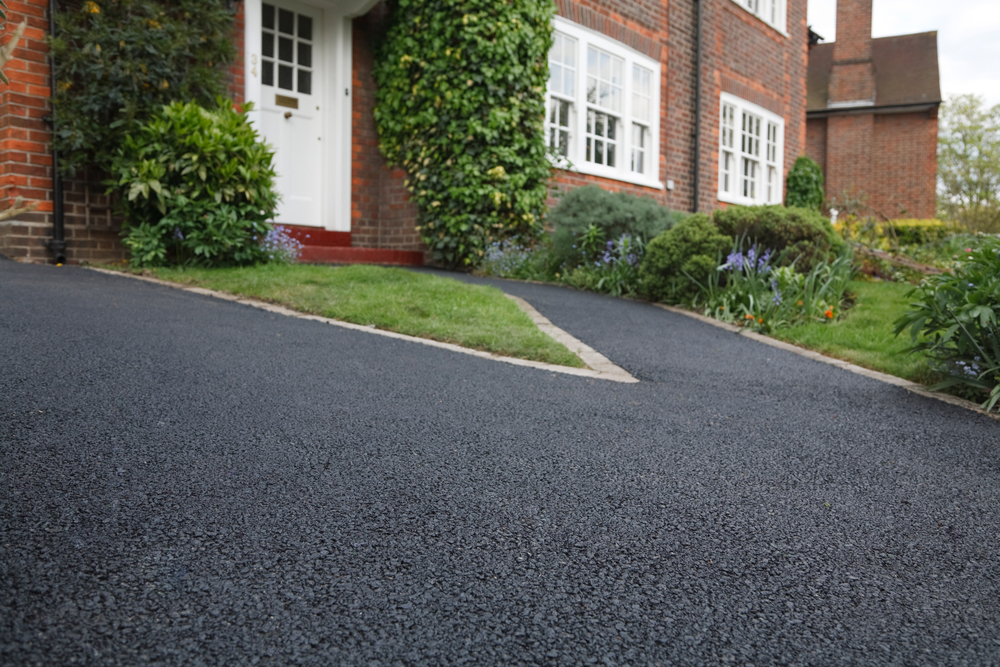Swift Solutions for Asphalt Spot Repair: Optimum Securing Strategies
Swift Solutions for Asphalt Spot Repair: Optimum Securing Strategies
Blog Article
Cold Mix Asphalt Vs. Hot Mix Asphalt: Which Is Right for You?

Make-up Differences
Cold mix and warm mix asphalts vary considerably in their make-up, with unique features that affect their efficiency and applications. Cold mix asphalt is produced by emulsifying the asphalt binder with water and an emulsifying agent before mixing it with accumulation. This technique permits for the asphalt to be workable at lower temperatures, making it excellent for short-lived repair services and for use in cooler weather. Warm mix asphalt, on the various other hand, is manufactured at heats, usually in between 300-350 ° F, which aids to attain better compaction and an extra long lasting end product. The warm mix asphalt production process includes heating up the accumulation and asphalt binder separately prior to combining them at the asphalt plant.
Moreover, cool mix asphalt often tends to be much less dense and more flexible than hot mix asphalt. This flexibility makes it better matched for areas with higher levels of activity, such as driveways or roadways with rush hour. On the other hand, warm mix asphalt is understood for its high toughness and resistance to rutting and fracturing, making it a recommended option for highways and high-traffic roads where durability is important.
Installment Process Differences
The procedure of setting up chilly mix and hot mix asphalt shows noteworthy variations in their treatments and needs. Cold mix asphalt, being a much more flexible material, can be used directly from the bag or container onto the pit or harmed area. It requires minimal preparation work, such as cleaning up the location and compacting the cold mix with hand tools. This makes it a hassle-free alternative for fast and short-lived repairs. In comparison, hot mix asphalt necessitates an extra elaborate installation process. It includes heating the blend to high temperature levels before laying it down on a correctly prepared base. The preparation consists of condensing the base, using a tack layer, and utilizing hefty equipment like pavers and compactors for a smooth and durable surface. Due to the heating demands, hot mix asphalt installations are normally brought out by specialists with customized equipment, guaranteeing a more irreversible and structurally sound result.
Resilience and Long Life Factors
When taking into consideration asphalt alternatives, durability and longevity are important aspects to review for lasting pavement performance. Warm mix asphalt (HMA) is recognized for its phenomenal toughness and long life. The high temperature levels throughout the laying and mixing procedure permit much better compaction, resulting in a denser and more powerful pavement structure. This results in HMA being more immune to hefty web traffic loads, harsh weather problems, and the effects of aging compared to cool mix asphalt (CMA)
In regards to longevity, HMA typically outmatches CMA because of its exceptional strength and resistance residential or commercial properties. HMA sidewalks have a longer life span, requiring much less regular fixings and maintenance, which can convert to cost financial savings over time. Additionally, HMA pavements are extra quickly personalized to satisfy details project needs, even more improving their sturdiness.
Price Considerations
Considering the financial effects is a crucial element when examining the selection in between warm mix asphalt (HMA) and chilly mix asphalt (CMA) for pavement tasks. While the initial expense of hot mix asphalt is usually higher than that of chilly mix asphalt, HMA commonly gives a much more economical service in the lengthy run due to its remarkable toughness and durability.
In addition to material expenses, it's important to take into consideration the costs linked with setup and maintenance when comparing HMA and CMA. Inevitably, the decision between HMA and CMA should take into account not simply the initial expense but also the long-lasting monetary ramifications to figure out the most cost-effective choice for the certain sidewalk task.
Environmental Effect Comparison
Comparison of the ecological influences between warm mix asphalt (HMA) and cold mix asphalt (CMA) exposes unique distinctions in sustainability methods. HMA production needs heats, resulting in boosted energy usage and greenhouse gas exhausts. The procedure also releases unpredictable organic compounds (VOCs) and harmful air pollutants (HAPs) into the ambience. In contrast, CMA is produced and applied at lower temperatures, decreasing energy usage and discharges substantially. The reduced production temperatures published here of CMA lead to reduced fuel usage and lower levels of CO2 discharges, making it a much more eco-friendly option.
Moreover, the usage of CMA often involves reusing existing asphalt pavement, advertising resource preservation and decreasing the amount of waste sent out to landfills. By deciding for CMA over HMA, roadway building projects can contribute favorably to environmental preservation initiatives.
Conclusion
Finally, the option in between cold mix asphalt (CMA) and hot mix asphalt (HMA) relies on numerous elements such as composition, setup process, longevity, longevity, expense, and ecological impact. angle parking. While CMA supplies a fast and cost-efficient solution for minor repairs, HMA guarantees exceptional durability and durability for rush hour areas. Consider these variables see this meticulously to determine which sort of asphalt is the best selection for your paving requires

Thinking about the economic implications is an important aspect when reviewing the choice between warm mix asphalt (HMA) and chilly mix asphalt (CMA) for pavement jobs. While the preliminary price of warm mix asphalt is normally higher than that of cold mix asphalt, HMA commonly offers a much more cost-efficient service in the lengthy run due to its premium durability and long life. cold mix asphalt.Contrast of the ecological impacts between warm mix asphalt (HMA) and chilly mix asphalt (CMA) discloses unique distinctions in sustainability techniques.In conclusion, the choice in between chilly mix asphalt (CMA) and hot mix asphalt (HMA) depends on numerous elements such this content as composition, installment procedure, durability, durability, cost, and environmental impact
Report this page